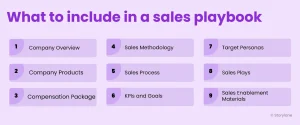
To build an effective sales funnel, marketers must understand the needs of their customers and create content that is aligned with those needs. By analyzing existing sales data and looking for lookalike audiences, businesses can craft messaging that captures and nurtures leads.
The top of the sales funnel is populated by consumers who become aware of your business and its offerings through ads, social media, or word of mouth. Capturing their attention is key to drawing them deeper into the funnel.
Awareness
The first step in any sales funnel is generating awareness. The goal is to attract potential customers with marketing content and other materials that showcase your unique value proposition and describe how you solve a particular problem. This stage can be accomplished through various marketing channels, such as social media campaigns and paid advertising.
After catching the attention of potential buyers, it’s important to continue to engage them throughout the entire process. This requires a clear understanding of the needs and wants of each audience segment, as well as their communication preferences.
For example, Nike’s sales funnel for sneaker releases focuses on building a desire among customers through exclusive content and special promotions. This approach ensures that all segments receive relevant information and provides a great customer experience. It also helps companies identify inefficiencies and optimize their sales processes to drive conversions. The resulting visibility allows businesses to allocate resources wisely and increase their ROI.
Interest
The first step in your sales funnel is to get potential buyers aware of your product or service. This could happen through Google search, Facebook ads, word of mouth or other marketing channels. You can use your customer avatar or persona to determine the best messaging and content for this stage of the sales funnel.
At this stage, prospects are weighing the merits of your products or services against their own needs and expectations. They may read product reviews, case studies and whitepapers or visit your website Bella Vegas casino for more information. Your goal at this stage should be to provide plenty of valuable information and demonstrate your expertise.
Once the prospect reaches the decision stage, they are ready to buy. They are comparing pricing, packages and features of different options. This is where you should make an irresistible offer to overcome any hesitancy they may still have. Offers like free shipping, discounts or bonus products can help boost conversion rates.
Desire
The action stage is where prospects turn into paying customers. To drive conversions, you may use marketing content like product promotions and discounts. You can also send email drip campaigns with educational content and product updates. This can help you build customer loyalty and generate repeat business.
To make the most of your sales funnel, you need insights into consumer behavior. Gathering data about your existing customers can help you create targeted messaging and find lookalike audiences. You can learn about their pain points, needs, goals, and aspirations to develop content that resonates with them.
When you know what your objectives are for each stage of the sales funnel, it’s easier to achieve them. This can improve your conversion rates and overall marketing performance. Using a sales management software like Pardot can help you nurture leads and convert them into customers. This can save you valuable time and money by automating tasks like landing page creation, lead scoring, and email drip campaigns.
Action
At the action stage, prospects are ready to make a purchase. At this point, marketers should focus on creating content that taps into emotion and provides compelling value propositions. Nike, for example, uses a video that highlights their sneaker release campaigns to create excitement and drive sales.
The action stage is also where marketers should focus on customer retention strategies and build loyalty. Providing post-purchase support, offering exclusive content, and enrolling customers in a loyalty program are some of the ways to do this.
By monitoring key metrics like conversion rates, CPAs, and customer lifetime values, businesses can optimize their sales funnel continuously. This allows them to stay ahead of the competition and thrive in a dynamic business landscape. It is important that the marketing and sales departments are in sync when it comes to understanding these metrics. This will enable them to deliver relevant and timely marketing messaging. It will also help them identify bottlenecks and remove friction points that impede the conversion process.








